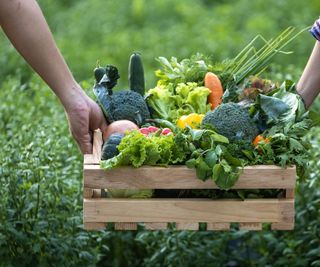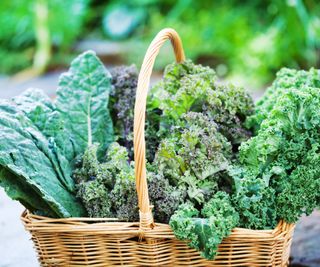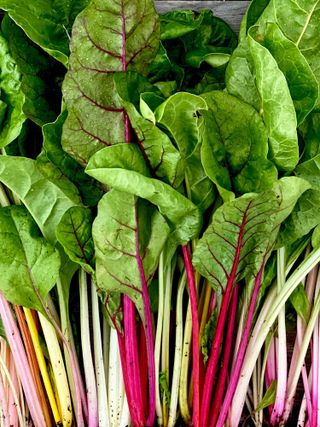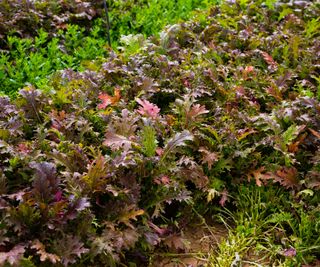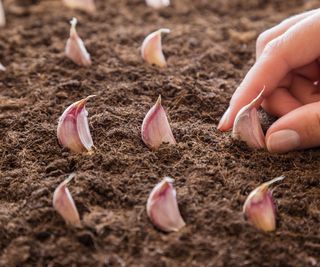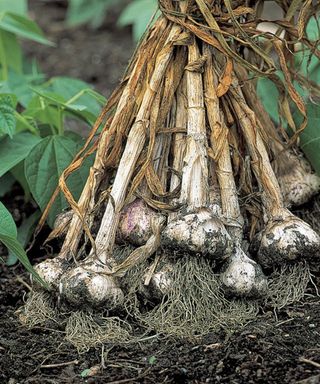
IFUGAO, Philippines – From the road along Tinoc, Ifugao, the view of mountaintops and slopes was a patchwork quilt of vegetable gardens.
On the wayside were a group of gardeners hauling baskets of carrots onto a truck. They were bound for the trading post in La Trinidad, Benguet, a four- to five-hour drive away from Tinoc. When asked, the farmers were not sure how much these would sell. They estimated getting P30 per kilo of carrots.
While higher temperatures than they’re accustomed to initially impacted irrigation, they said the quantity of their produce had remained the same. What they’re sure of, however, was that prices were down again in La Trinidad because of oversupply.
The agriculture department had attributed this problem earlier this year to fewer buyers, which led to a deterioration in the quality of the unsold vegetables.

Meanwhile, Bambang, Nueva Vizcaya, where the bulk of Tinoc’s produce goes to, was almost three hours away. Trucks carrying Tinoc’s crops have to ply the Kiangan-Tinoc-Buguias national road to reach the trading hubs in Bambang and La Trinidad.
In Ifugao – more known to the public for Banaue’s picturesque rice terraces – vegetable gardens had sprouted as the roads were built. In fact, Tinoc is dubbed as the salad bowl of the province.
From rice paddies to vegetable gardens
Before the roads were developed, some of the people of Tinoc went to neighboring provinces to find work. One of the places they went to was Buguias, a vegetable-producing town in Benguet.
According to Tinoc agricultural officer Conrado Bahiwag, the Kalanguya people learned vegetable gardening when they migrated to Buguias.

When they returned home to Tinoc, they started planting vegetables, shifting away from palay, which was their traditional produce. This was similar to the transition in farming that the Buguias people went through almost a century ago as vegetable farming was more profitable and fit for the cool climate of the region.
Bahiwag said that four barangays in Tinoc – Poblacion, Impugong, Tukucan, and Eheb – started vegetable gardening in the 1990s, when the construction of roads in Tinoc started, . A total of 448 kilometers of roads were built in Tinoc from 2012 to 2020, he added.
“Where there are roads, there are farmers,” he told Rappler.
Because of El Niño, Bahiwag said some farmers had to delay their production, anticipating issues with irrigation. In Tinoc, he said, farmers obtain water for crops from rain.
While there’s a delay, Bahiwag said it had not affected the quantity of production. With or without El Niño, irrigation remains a long-standing problem in their town. The agricultural officer said they were in need of at least 10 more irrigation systems to cover a hundred hectares of farmlands.

It was also a passable road, according to geographer and academic Martin W. Lewis’s Wagering the Land, that contributed to the boom of the vegetable industry in Buguias in the early postwar years.
“The resulting advantages of climate and transport attracted thousands of settlers to the ridge,” Lewis wrote. “Where only a handful of families had lived before the war, a string of fast-growing market towns soon sprouted.”
Currently, the Kiangan-Tinoc-Buguias road connects the towns of Ifugao to Benguet, rising to the highest point in the Philippines at 2,428.66 meters above sea level. It skirts the Mount Pulag Protected Landscape and was declared a national road in 2013. Very few portions remained gravel paths.
The road looked cumbersome. It pierced through a cloud forest that was home to stunted trees covered by hanging moss, their trunks gnarled and almost bending toward the ground.
Food vs forest
Vegetable gardening provides livelihood to many people in Tinoc, home to 18,475 people. A majority of them, Tinoc Vice Mayor Efren Tacio estimated, are engaged in vegetable gardening. However, many have raised the impacts of the livelihood on the environment.
A 2022 roundtable discussion held by the Department of Agriculture and the Department of Environment and Natural Resources (DENR) found that there were inadequate environmental assessments of farm-to-market roads in the Cordillera region, as well as monitoring of the use of equipment like backhoes on farms.
The discussion also mentioned the “accelerated encroachment” of gardens in protected areas in the Cordilleras.
Charinne Abalos of the enforcement division of DENR Cordillera said the agency opposed the further expansion of these vegetable gardens that encroach on protected areas.

According to the Global Forest Watch, Tinoc lost 584 hectares of primary forests from 2002 to 2023. Deforestation could contribute to soil erosion and siltation of waterways.
While erosion could harm irrigation systems serving the gardens, these impacts were felt more by those residing in the lowlands.
But the forage for food and the fight for forests are not black-and-white issues, especially considering that the Kalanguya had received their Certificate of Ancestral Domain Title from the government, solidifying their ownership of majority of the land in Tinoc and its resources.
“When is enough, enough?” Abalos told reporters during a May 13 press briefing in Lamut, Ifugao.
During the press briefing in Lamut, the DENR’s City Environment and Natural Resources Office recommended increasing the value of products instead of production capacity, improving land tenure security of the Kalanguyas, and promoting conservation farming, among others.

The environment regional office emphasized that the conversion of land to gardens should be based on their Ancestral Domain Sustainable Development and Protection Plan or the indigenous peoples’ sustainable management plan.
While indigenous peoples are often far from being a homogenous collective, it would be hard to imagine any intentional damage done to the mountains.
“So, what’s the wrongdoing here?” Rappler asked the officer in Tinoc.
“We convert faster than we can replenish,” was Bahiwag’s ready answer. While many of the Kalanguyas’ lives were improved by vegetable gardening, Bahiwag said Tinoc remains poor.
“Kaya ang tao humahanap ng ikabubuhay (That’s why people are looking for livelihood).”

It takes less than half an hour to visit the Philippines’ highest point from Tinoc’s municipal hall. Clouds hovered over gullies and vegetable gardens along the way.
On a summer day in May, as El Niño neared its end, it started to rain at high elevation. A sign at the highest point read in huge letters: “Save our Watersheds.”
When the rain stopped and the sun shone again, a double rainbow appeared past gnarled trees. Their pot of gold is an expanse of forests. – Rappler.com
Source: rappler.com












